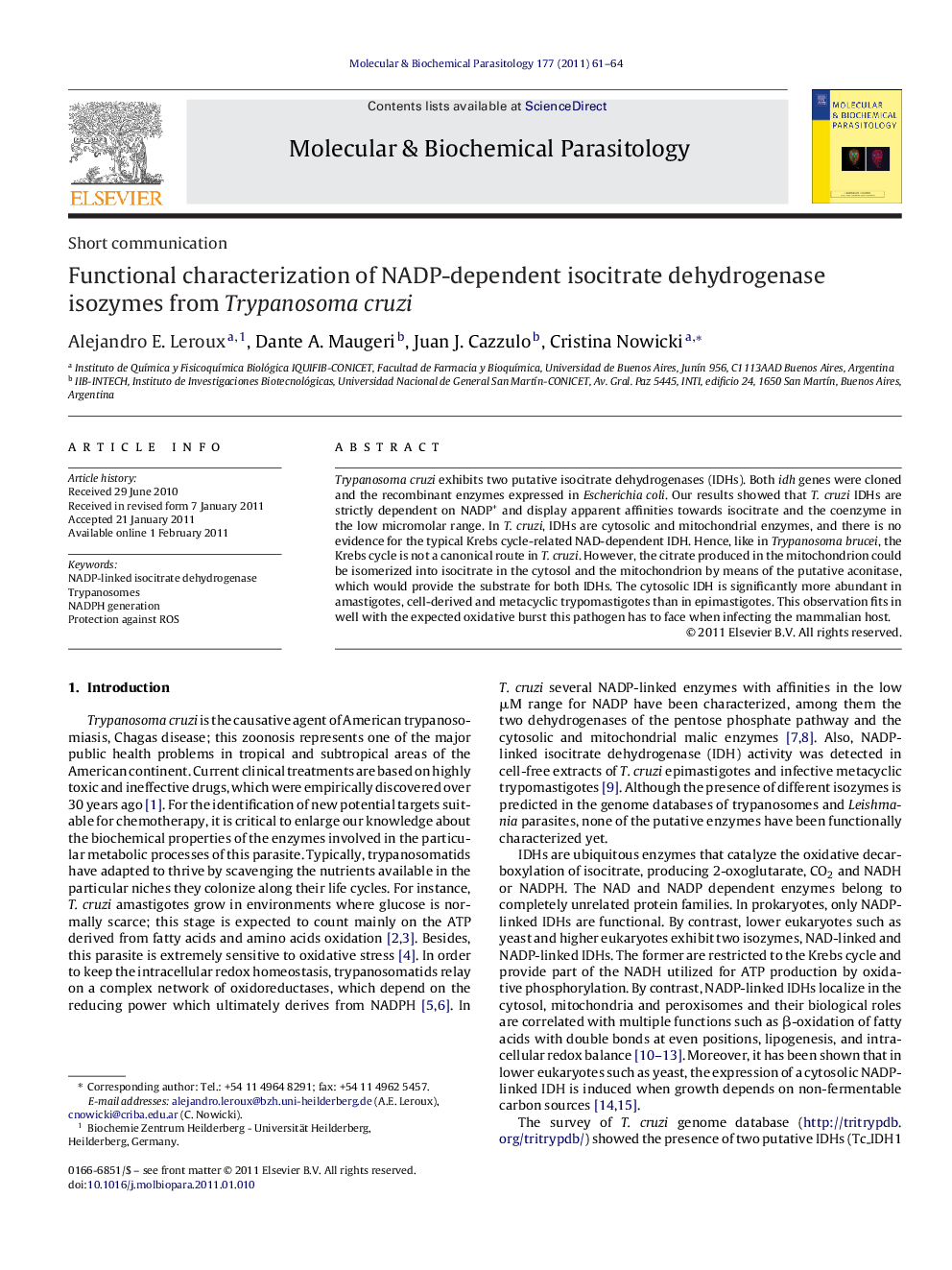| Article ID | Journal | Published Year | Pages | File Type |
|---|---|---|---|---|
| 5915798 | Molecular and Biochemical Parasitology | 2011 | 4 Pages |
Trypanosoma cruzi exhibits two putative isocitrate dehydrogenases (IDHs). Both idh genes were cloned and the recombinant enzymes expressed in Escherichia coli. Our results showed that T. cruzi IDHs are strictly dependent on NADP+ and display apparent affinities towards isocitrate and the coenzyme in the low micromolar range. In T. cruzi, IDHs are cytosolic and mitochondrial enzymes, and there is no evidence for the typical Krebs cycle-related NAD-dependent IDH. Hence, like in Trypanosoma brucei, the Krebs cycle is not a canonical route in T. cruzi. However, the citrate produced in the mitochondrion could be isomerized into isocitrate in the cytosol and the mitochondrion by means of the putative aconitase, which would provide the substrate for both IDHs. The cytosolic IDH is significantly more abundant in amastigotes, cell-derived and metacyclic trypomastigotes than in epimastigotes. This observation fits in well with the expected oxidative burst this pathogen has to face when infecting the mammalian host.
Graphical abstractTrypanosoma cruzi has two functional NADP-linked isocitrate dehydrogenases. The expression of the cytosolic isozyme is notably up-regulated in amastigotes, cell-derived and metacyclic trypomastigotes.Download high-res image (118KB)Download full-size imageResearch highlights⺠Two putative isocitrate dehydrogenases (IDHs) from Trypanosoma cruzi were cloned. ⺠Both IDHs display low micromolar app. Km values towards isocitrate and NADP+. ⺠The isozymes are localized in the cytosol and the mitochondrion. ⺠The expression of IDHs is developmentally regulated along the parasite life cycle.
